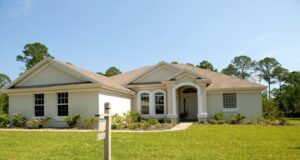NAR: Another Monthly Gain for Pending Home Sales
The Pending Home Sales Index, a forward-looking indicator based on contracts signed, increased 0.6 percent in October, marking the second consecutive monthly gain, according to the NATIONAL ASSOCIATION OF REALTORS®.
The index rose to 87.2 from an upwardly revised reading of 86.7 in September. However, the October index still was 18.4 percent below year-earlier reading of 106.8.
“The broad trend over the coming year will be a gradual rise in existing-home sales,” says Lawrence Yun, NAR’s chief economist. “But because sales are exceptionally low in the final months of 2007, total sales for 2008 will be only modestly higher than 2007.” A recovery for new-home sales is unlikely before 2009, he adds.
Yun says the worst part of the credit crunch has already worked its way through the data: “Now that mortgage conditions have improved, some postponed activity should turn up in existing-home sales over the next couple of months, and I expect sales at fairly stable to slightly higher levels.”
Existing-home sales in 2007 are likely to total 5.67 million this year, the fifth highest on record, and then rise to 5.70 million in 2008. By comparison, home sales in 2006 totaled 6.48 million.
Regional Pending Home Sales Data
Pending home sales in the Northeast jumped 16.0 percent in October to 80.6 but is 11.1 percent below a year ago. In the West, the index rose 8.4 percent to 87.3 but is 16.9 percent lower than October 2006. The index in the Midwest slipped 1.4 percent in October to 85.5 and is 11.7 percent below a year ago. In the South, the index dropped 7.8 percent in October to 91.6 and is 25.3 percent below October 2006.
“The improvement in the Northeast reaffirms a trend apparent for some months now that shows signs of recovery, noteworthy because that was the first region to slump, and the gain in the West indicates some easing of interest rates for jumbo loans,” Yun says.
He says that raising the loan limits on FHA and GSE-backed conventional loans will markedly improve mortgage availability.
A Look at Prices: Slight Growth Expected
Prices for existing homes should be down 1.9 percent to a median of $217,600 for all of 2007, and then rise 0.3 percent to $218,300 in 2008.
“Home price growth in the vast affordable midsection of America will help raise the national median existing-home price slightly in 2008. I then expect price appreciation to return to more normal patterns in 2009, perhaps rising one or two percentage points above the rate of inflation,” Yun said.
Even with a modest decline in the national aggregate price this year, it’s important to keep in mind that nearly two-thirds of the metro areas in the U.S. are showing price increases, Yun says.
“The apparent disparity results from fewer sales in high-cost markets, so a change in the mix of sales is dragging down the national median home price.”
Areas showing healthy price gains include disparate markets such as Gary-Hammond, Ind.; Binghamton, N.Y.; Corpus Christi, Texas; and Spokane, Wash. “We can’t emphasis enough how much local conditions vary, even within a given area, so it’s important for consumers to make decisions based on local market conditions.”
Forecast for New Home Sales
New-home sales are forecast at 788,000 this year and 693,000 in 2008, down from 1.05 million 2006; no sustained improvement is seen for new homes until 2009.
Because builders have correctly adjusted production, housing starts, including multifamily units, will probably total 1.36 million this year and 1.16 million in 2008, down from 1.80 million last year.
The median new-home price is projected to drop 3.0 percent to $239,100 for 2007, and then decline another 0.2 percent to $236,600 in 2008.
Economic Outlook: Mortgage, GDP, Employment
The 30-year fixed-rate mortgage is estimated to rise slowly to the 6.4 percent range by the end of 2008, with additional cuts in the Fed funds rate lowering short-term interest rates.
Growth in the U.S. gross domestic product (GDP) should be 2.1 percent in 2007, down from a 2.9 percent growth rate last year; GDP growth is forecast to improve to 2.4 percent in 2008.
The unemployment rate is likely to average 4.6 percent for 2007, unchanged from last year, but rise to 5.0 percent in 2008. Inflation, as measured by the Consumer Price Index, will probably be 2.8 percent this year and 2.7 percent in 2008, down from 3.2 percent in 2006. Inflation-adjusted disposable personal income is estimated to grow 3.1 percent this year, the same as in 2006, and then grow 2.2 percent next year.
















